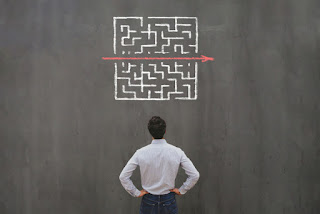Stand Out From the Crowd With Textured Business Cards
Business cards are a convenient 3.5" x 2" way to share your business with prospective clients.
However, with about 10 billion business cards being printed annually, finding ways to make your business card stand out is essential. The texture of your business card can add character, convey meaning, and make you memorable.
Everything You Need to Know About Textured Business Cards
Finishes That Add Texture
The finish you choose for your business card not only makes it look more polished but also adds texture, creating another dimension to your business card.
Two of our favorite finishes are:
- Matte. A matte finish is smooth, giving it an expensive appearance. It enables you to write on the card, making it helpful if someone has a personal inquiry that requires more information than can be found on the business card. However, if you want a colorful card, matte can make colors seem duller.
- Glossy. A glossy finish gives the card a shiny look and increases its longevity by protecting it from water and tearing. Furthermore, colors come out quite well with a glossy finish. Unfortunately, the glossy finish prevents people from writing on the card.
Materials That Add Texture
Paper is just one of many materials on which you can print business cards.
Try experimenting with other materials, such as:
- Metal. It is uniquely appealing, durable, and works well with cutout holes. However, it is expensive and has limited production.
- Plastic. This material is quite durable and lightweight, but it can be costly.
- Wood. Wood is sustainable with a natural texture. However, it is somewhat brittle.
- Cork. Environmentally friendly, but it is not waterproof.
- Fabric. Fabric is versatile but costly because other materials, such as paper, must be added.
The material you choose will give the card a unique texture and character.
Techniques That Add Texture
Paper is the most common material for business cards and can be textured through various techniques.
- Letterpress. It is created by applying an inked, raised surface against sheets, and it has a vintage feel and adds texture through raised and lowered letters.
- Blind deboss. The blind deboss is like a letterpress but without ink. Therefore, the words and designs are seen by being raised or lowered. Impressed words and graphics are in the background, giving you the ability to have multiple layers.
- Woven, dotted, and geometric textures. A blind deboss creates a business card with various background designs that add texture.
- Die cut. A sharp die cuts various shapes or letters into the card.
- Spot varnish texture. Clear ink is added to certain card parts to create texture or shine, making those areas pop.
The texture-added choices you make allow you to add depth to the design. Not only can you convey information with words, but also with the card's design.
Texture can make your business cards and, subsequently, your business unforgettable. Contact us to create a set of special business cards today!




Comments
Post a Comment